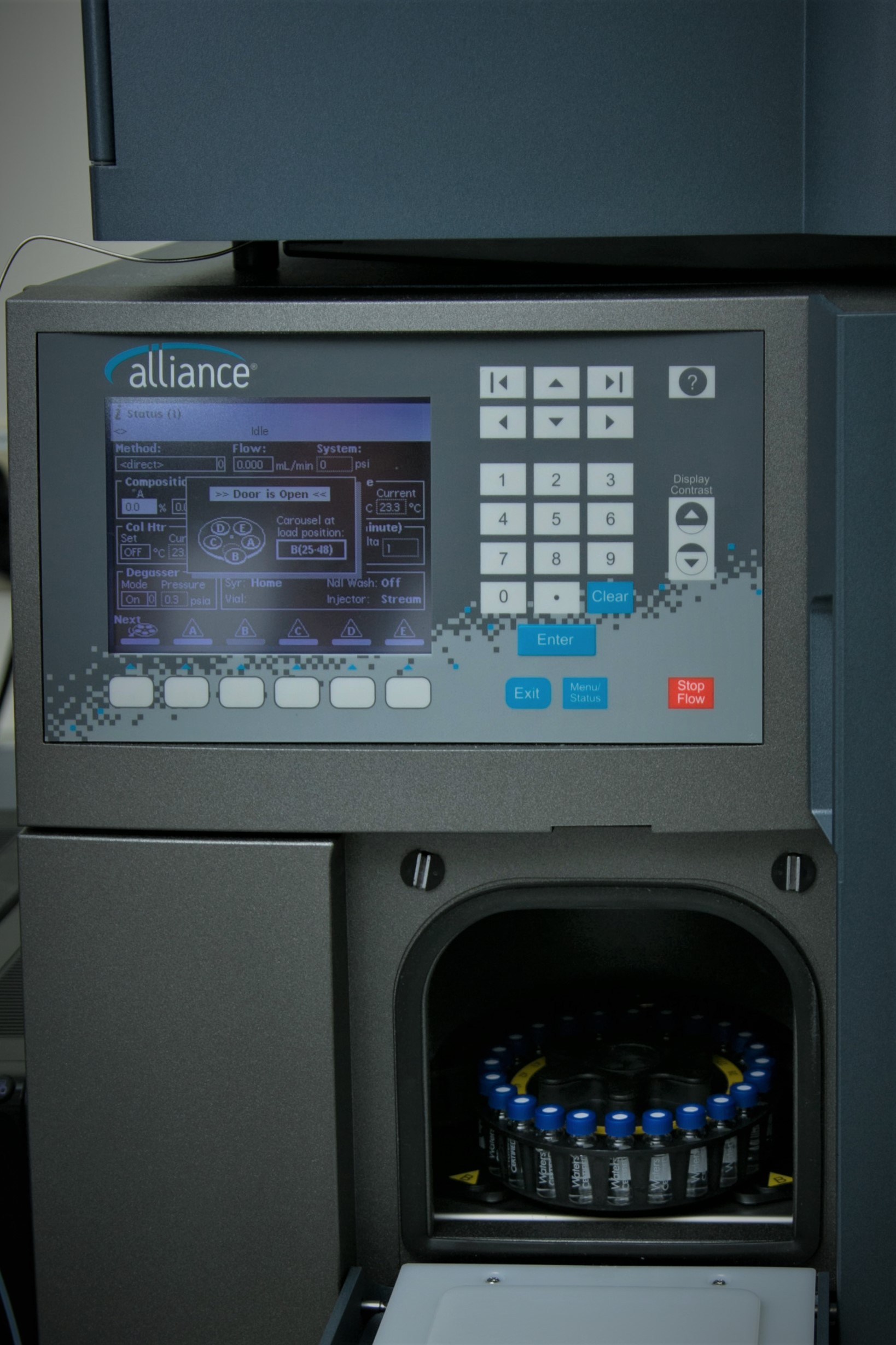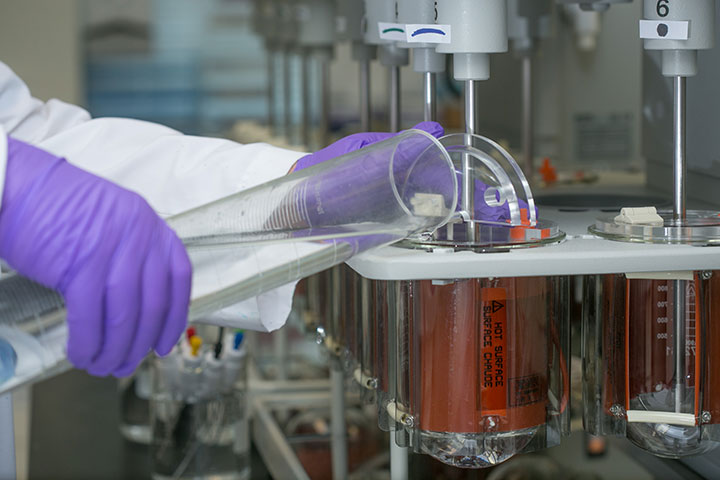Analytical Sciences
Stability Indicating Analytical Method Development
Shelf-life is based on increases in something undesirable (e.g., degradation products, color, smell) or decreases in something desirable (e.g., activity or potency, dissolution rate). FreeThink develops appropriate analytical methods for quantifying these changes for a wide variety of pharmaceutical and non-pharmaceutical products, including those with multiple actives, actives with no chromophores, and materials with difficult separations.
One aspect of developing a stability-indicating method is to expose the product to forced degradation conditions. FreeThink conducts studies exposing actives to stresses for hydrolytic, oxidative, thermal and photolytic sensitivity, then develops appropriate methods for degradant detection, usually HPLC, UPLC or GC.
When developing LC methods, FreeThink scientists:
- Screen multiple column chemistries based on their expertise in this field.
- Vary eluting solvents and gradients to achieve separations based on a phase-appropriate approach: minimal optimization through full optimization/validation.
- Use charged aerosol detector (CAD), evaporative light scattering (ELS) or MS detection adjusting the eluting solvents accordingly when the active has no chromophore.
Click here to view a slide presentation titled “A Systematic Approach to Developing Stability Indicating Methods (SIMs),” which was given by FreeThink Technologies’ Head of Analytical Services.

Extraction/Sample Preparation
It is often critical to extract the active and degradants from the product matrix. FreeThink develops appropriate (up to fully validated) sample preparation methods by:
- Identifying solvents with the right solvation tendencies.
- Determining the form of energy to apply to help speed dissolution.
- Developing a filtration or centrifugation process to separate active and degradants from insoluble materials.
- Testing that the extraction method recovers active quantitatively.

Dissolution
For tablets and capsules, dissolution methods and stability are key considerations. We develop methods that can be “fit-for-purpose” through full validation:
- The solubility of the active as a function of pH establishes whether solubilization is necessary for “sink” conditions (e.g., the active is well-below saturation when the entire amount is released). Appropriate solubilizing agents (e.g., surfactants) are added.
- UV-visible analysis absorption spectroscopy is preferable; however, an HPLC potency assay may be needed.
Most often at FreeThink, dissolution testing methods are developed using baskets (USP method I) or paddles (USP method II). - FreeThink works with the sponsor company to establish specification limits (“Q-values”).
